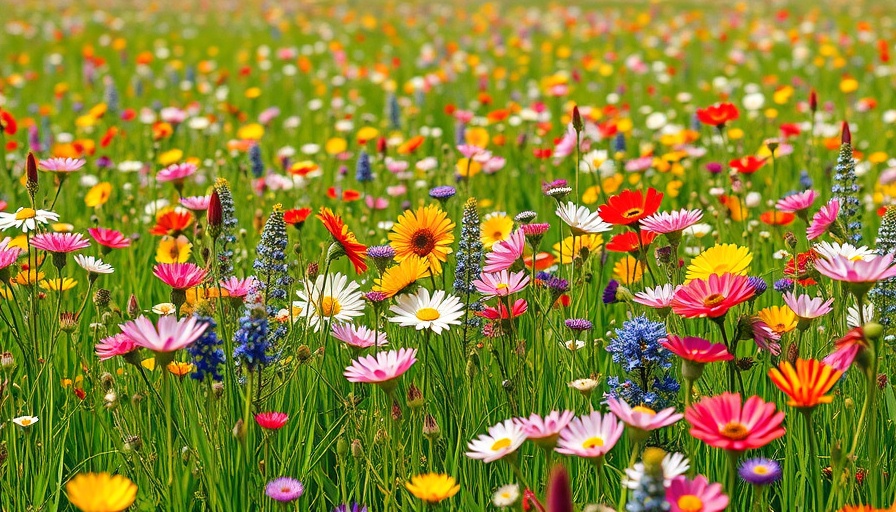
Revitalize Your Yard with Vibrant Wildflowers
As more homeowners seek an accessible and low-maintenance alternative to traditional landscaping, wildflowers emerge as an underappreciated hero. Why not consider wildflowers for your outdoor spaces? They not only bring beauty to your landscape but also provide a host of benefits that appeal to both novice gardeners and seasoned horticulturists alike.
The Unexpected Perks of Planting Wildflowers
First and foremost, wildflowers require minimal upkeep. Once set in their new homes, these resilient plants do not need regular watering or fertilizers, making them a practical choice for busy homeowners. As they mature, they merely demand a cut-back at the end of their bloom season or early spring. This drastically reduces time spent on outdoor chores.
Wildflowers burst with color and charm, offering a constantly changing visual feast. This dynamic backdrop adds eclectic beauty to your home, making seasonal transitions more pronounced. The variety in color and bloom periods ensure that your landscape remains lively and engaging.
Perfect for the Wallet and the Ecosystem
From a financial perspective, planting wildflowers is an economically wise decision. The initial seed cost is significantly less than purchasing individual plants, and given their self-seeding nature, these flowers can establish themselves year after year for minimal upkeep costs.
Moreover, wildflowers act as a sanctuary for wildlife. Pollinators, such as bees and butterflies, thrive among wildflower patches, boosting local biodiversity. This adds not just beauty but ecological value to your yard, turning your garden into a small ecosystem that promotes sustainability.
Ideal Locations for Wildflowers
Wildflowers can thrive in various spaces. Ideal planting spots include wide-open areas and the edges of wooded lots where they can gradually transition from yard to forest. However, it is advisable to avoid planting them too close to your home, as they might attract small critters. Instead, think of locations where you can appreciate their beauty without compromising comfort.
Getting Started with Wildflowers
The process of planting wildflowers is akin to seeding a lawn. Begin by clearing debris and preparing the soil with quality loam. Using a broadcast spreader, sow the seeds according to package instructions and keep the area moist until germination takes place, typically best in late summer or early fall. Make sure to conduct regular checks during this period to facilitate proper growth.
Conclusion: Embrace the Beauty of Wildflowers
Incorporating wildflowers into your landscaping not only minimizes maintenance but also enhances your property’s ecological value and aesthetic appeal. Embrace this charming solution that benefits both your wallet and local wildlife. Start your journey towards a beautiful, vibrant yard today!
 Add Row
Add Row  Add
Add 




 Add Row
Add Row  Add
Add 

Write A Comment